Click on images to enlarge

infestation (Photo: Sheldon Navie)

habit (Photo: Sheldon Navie)
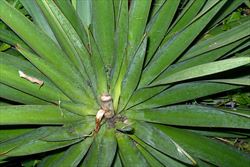
dark green, elongated, stiff leaves (Photo: Sheldon Navie)

close-up of leaf bases (Photo: Sheldon Navie)
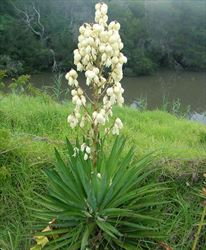
large branched flower cluster (Photo: Sheldon Navie)

close-up of flower buds (Photo: Sheldon Navie)

cream-coloured drooping flowers (Photo: Sheldon Navie)
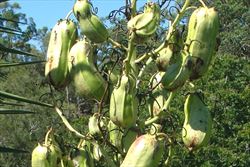
immature fruit (Photo: Sheldon Navie)
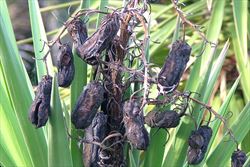
mature fruit (Photo: Sheldon Navie)
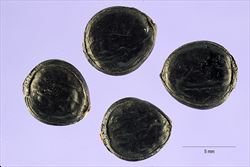
close-up of seeds (Photo: Tracey Slotta at USDA PLANTS Database)
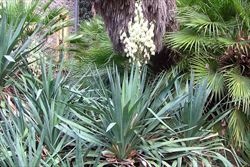
the very similar Yucca gloriosa, with bluish-green leaves that are thinner and more flexible (Photo: Sheldon Navie)

Yucca aloifolia 'Tricolor', a cultivar with variegated leaves (Photo: Sheldon Navie)
Scientific Name
Yucca aloifolia L.
Family
Agavaceae
Common Names
aloe yucca, coastal yucca, dagger plant, daggerplant, dwarf yucca, Spanish bayonet, Spanish dagger, yucca
Origin
Native to south-eastern USA (i.e. Alabama, Florida, Georgia, southern Louisiana, southern Mississippi, North Carolina, South Carolina and south-eastern Texas), Mexico and the Caribbean (i.e. Antigua and Barbuda, Guadeloupe, Jamaica and St. Lucia).
Naturalised Distribution
This species is widespread but scattered in Australia, and is mainly found in coastal districts. It has been recorded in south-eastern and central Queensland, in some parts of eastern New South Wales, in the ACT and in south-western Western Australia. It is also sparingly naturalised on Lord Howe Island.
Also naturalised overseas in other parts of the Caribbean (e.g. Puerto Rico and the Virgin Islands) and in New Caledonia.
Notes
Yucca (Yucca aloifolia) is regarded as an environmental weed in New South Wales and as a potential environmental weed or "sleeper weed" in other parts of Australia.

